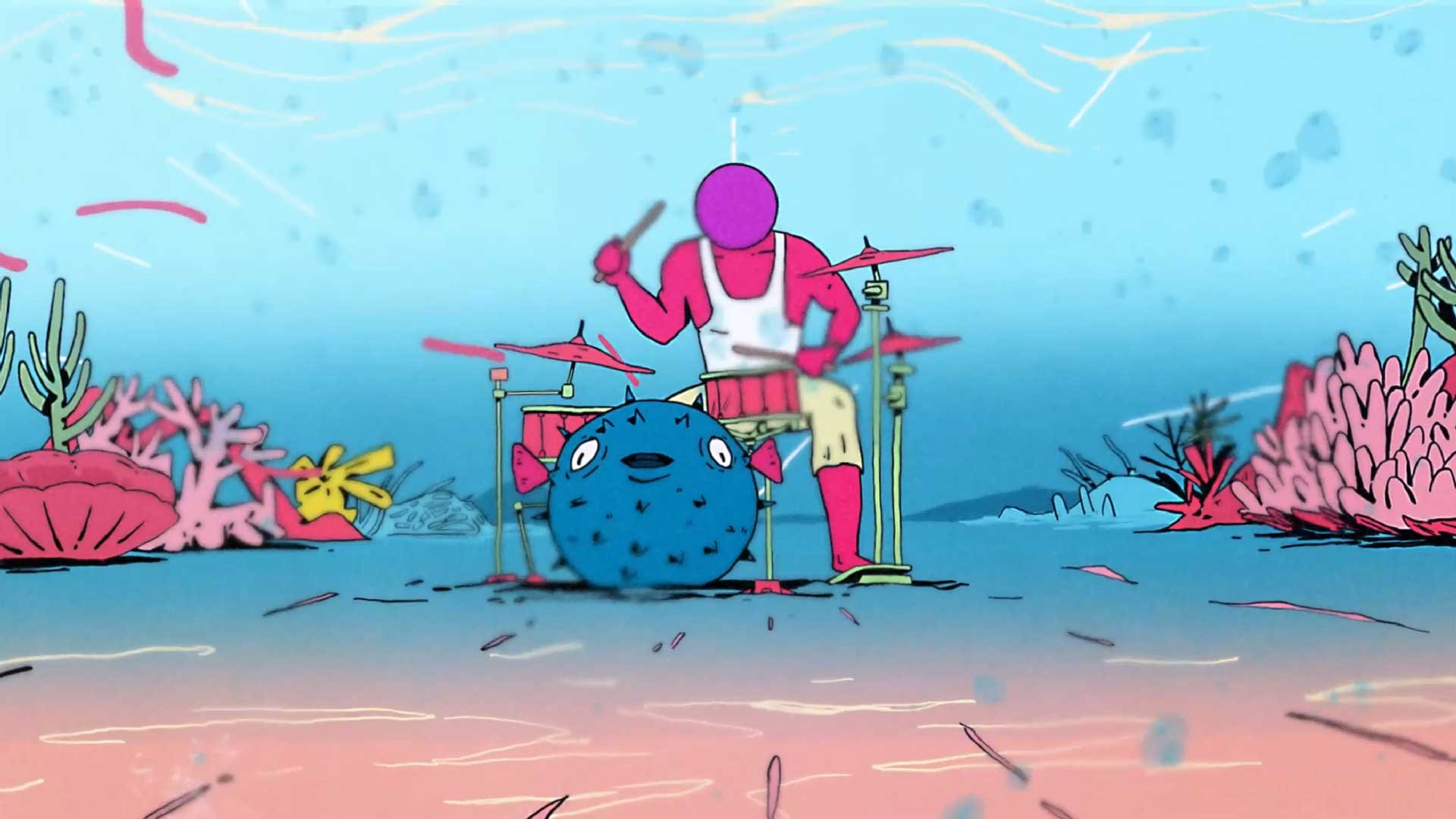Takeover Tuesday with Arman Alipour
Q&A with Arman Alipour, a Motion Graphic Designer based in Johannesburg, South Africa, and Co-Founder of HappyGoat Studio.
Q&A with Arman Alipour
Read time: 5min
Madison Caprara:
Hey, Arman! Why don’t we start off by having you give an introduction to yourself and your work?
Arman Alipour:
Hello, I'm Arman. I was born in 1987 and have been drawing since I can remember. I was 17 when I developed an interest in animation if I remember correctly.
I started early on doing motion tests, making a few short animated films. Around six years ago, during which I was mainly illustrating, I began creating animations. They were mostly motion graphics in adverts. However, during the gaps between projects, I would create short animation loops all of which you can view on my current socials.
Madison Caprara:
Now, I see that you are one of the Co-Founders of HappyGoat Studio! Before making the leap to opening your own studio, what did your professional journey look like?
Arman Alipour:
HappyGoat was actually not my first studio. I've established two others, the first of which was engaged in film montages. With the second studio, I worked with motion graphics and social marketing. However, Happygoat’s focus has been on getting projects to be closer to the look and feel of my personal work. Before, I had been focused on finding my own style and gaining experience. Just learning the industry ropes really.
Madison Caprara:
And what ultimately prompted you to start HappyGoat after already having established the previous two?
Arman Alipour:
Some of my friends and I were extremely like-minded. We eventually came together to deliver better quality creative works. I believe that teamwork is far more effective and fruitful than working alone.
Madison Caprara:
Where does the studio’s name come from, if you don’t mind me asking?
Ali Alipour:
I found the name very funny. I remember seeing a video on Instagram which depicted this beach. The sunshine on the water made it all so colorful, and there was this extremely happy goat jumping around. The atmosphere was surreal, you could tell the goat was happy. I liked the image a lot and recommended it to my friends. They welcomed it!
Madison Caprara:
So funny! It’s a unique name, so I had to ask.
What were some first steps in the early days? Where did you begin?
Arman Alipour:
As I mentioned, it was not my first studio so it was not that big of a challenge. I had previously worked with this group on other projects. We all knew exactly what to do.
Madison Caprara:
You were pretty much experts at studio openings at that point! How do you feel like HappyGoat has changed from those early days?
Arman Alipour:
You know, since our inception, we have done all kinds of work. We have collaborated with all sorts of artists. And in most of the cases, our clients were perfectly satisfied. This really raised our confidence, while also turning HappyGoat into a studio that almost everyone in the business knows about. Therefore, a higher quantity and more interesting projects are being offered to us now than there was in the beginning.
Madison Caprara:
What would you say is HappyGoat’s signature style or clientele type?
Arman Alipour:
The mood that we evoke is usually surreal and a bit dark, the clientele approve of our style though. They mostly emphasize that concepts should be conveyed explicitly, which we are not in favor of.
Madison Caprara:
Would you say that your style and preferred projects are the same as the studio’s?
Arman Alipour:
Yes, I work with a group of people who are mentally similar to me, therefore the atmospheres that we create during projects are usually the same.
Madison Caprara:
You freelance as well, correct? How do you balance your freelance work with that of HappyGoat’s?
Arman Alipour:
Yes, that is true. Oftentimes, I try to juggle my personal tasks with those in the studio which, of course, leaves me totally exhausted at times. However, if needed, I'll attend to the business in the studio and then do my own work after hours.
Madison Caprara:
And how do you go about approaching a project? What does your personal creative process look like?
Arman Alipour:
As a rule, my friends and I arrange meetings in which we exchange ideas so that a basic concept is introduced. Next, the writer of the team will write the story. I'll then do the storyboarding. Brainstorming is a completely collective task, as is decision-making.
Madison Caprara:
How do you stay consistently inspired when brainstorming original ideas for projects? I imagine your plate is pretty full with studio and personal work.
Arman Alipour:
You bet! I always try to set aside time for observation. I browse various websites, check the latest works of other studios and artists. It keeps me motivated and gives me new ideas.
Madison Caprara:
Before I forget to ask, what is the creative industry like in Johannesburg? Has it changed much since your beginning?
Arman Alipour:
Working conditions, I think, are the same all over the world. The clients expect the best. This is also the case in Johannesburg. I think we've been able to win the trust of more and more individuals and companies. That in itself is great progress, isn't it?
Madison Caprara:
For sure. What’s a relationship without trust, you know?
Well, it’s been great getting to know you, Arman. Do you have any parting words or advice you’d like to share?
Arman Alipour:
Never stop learning!





